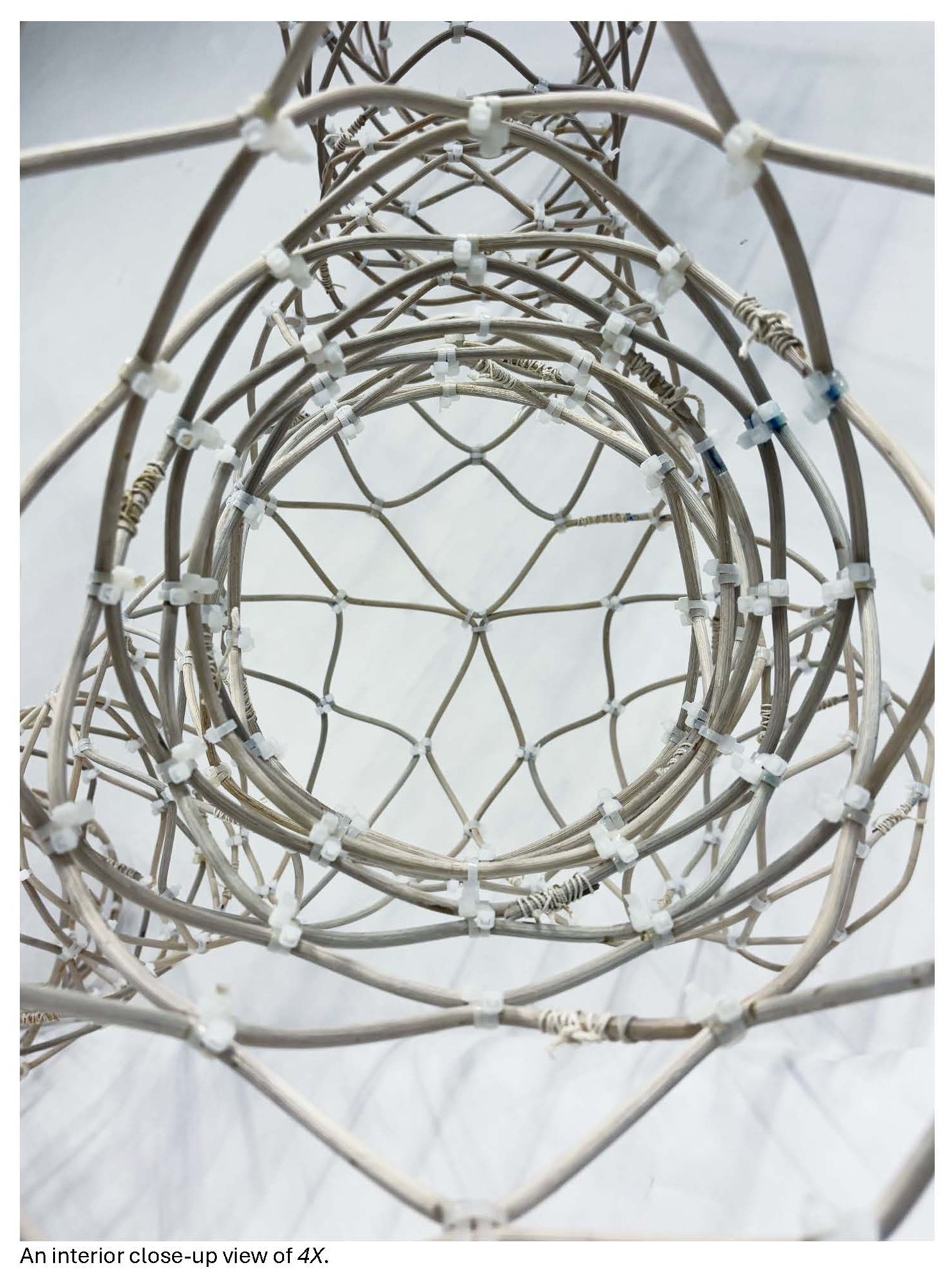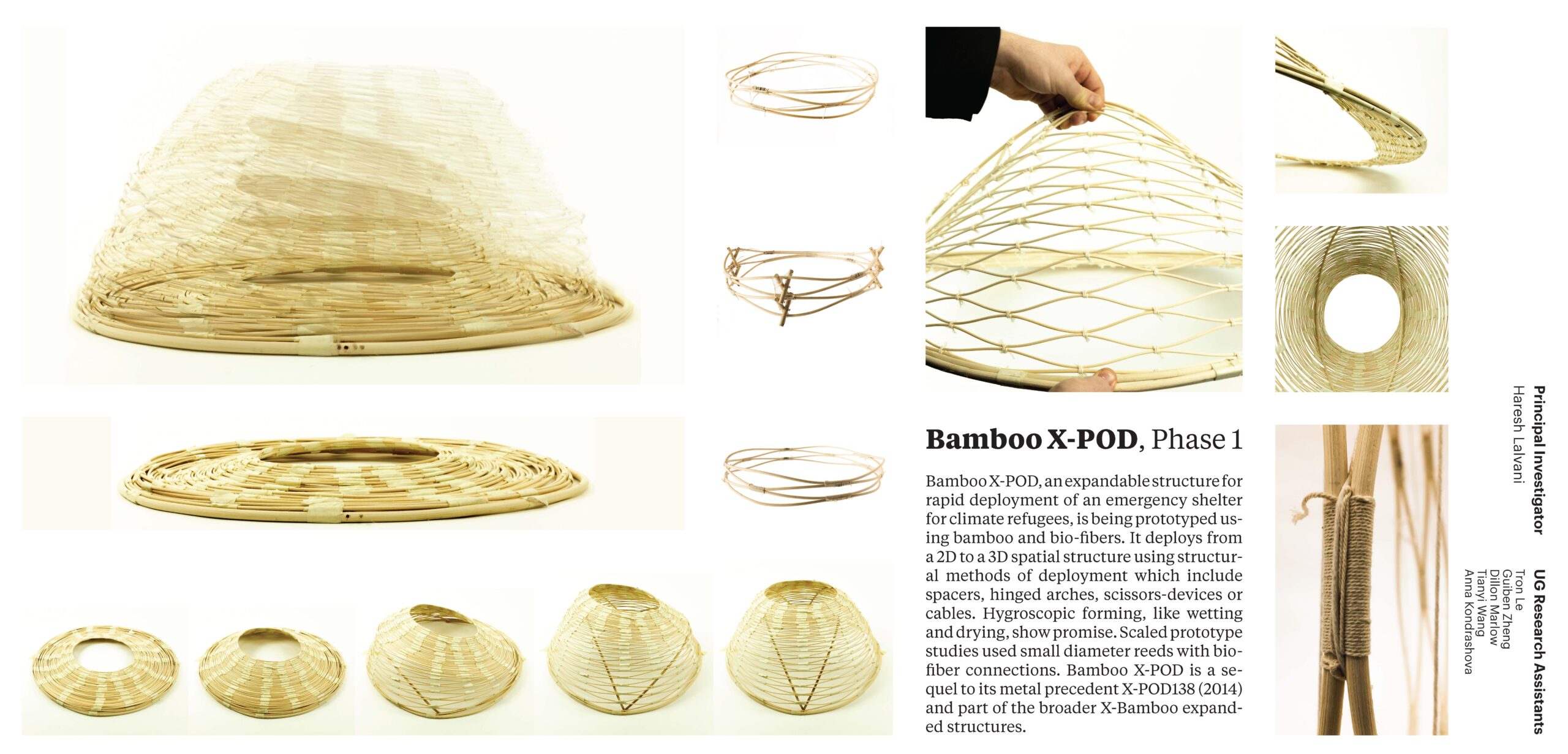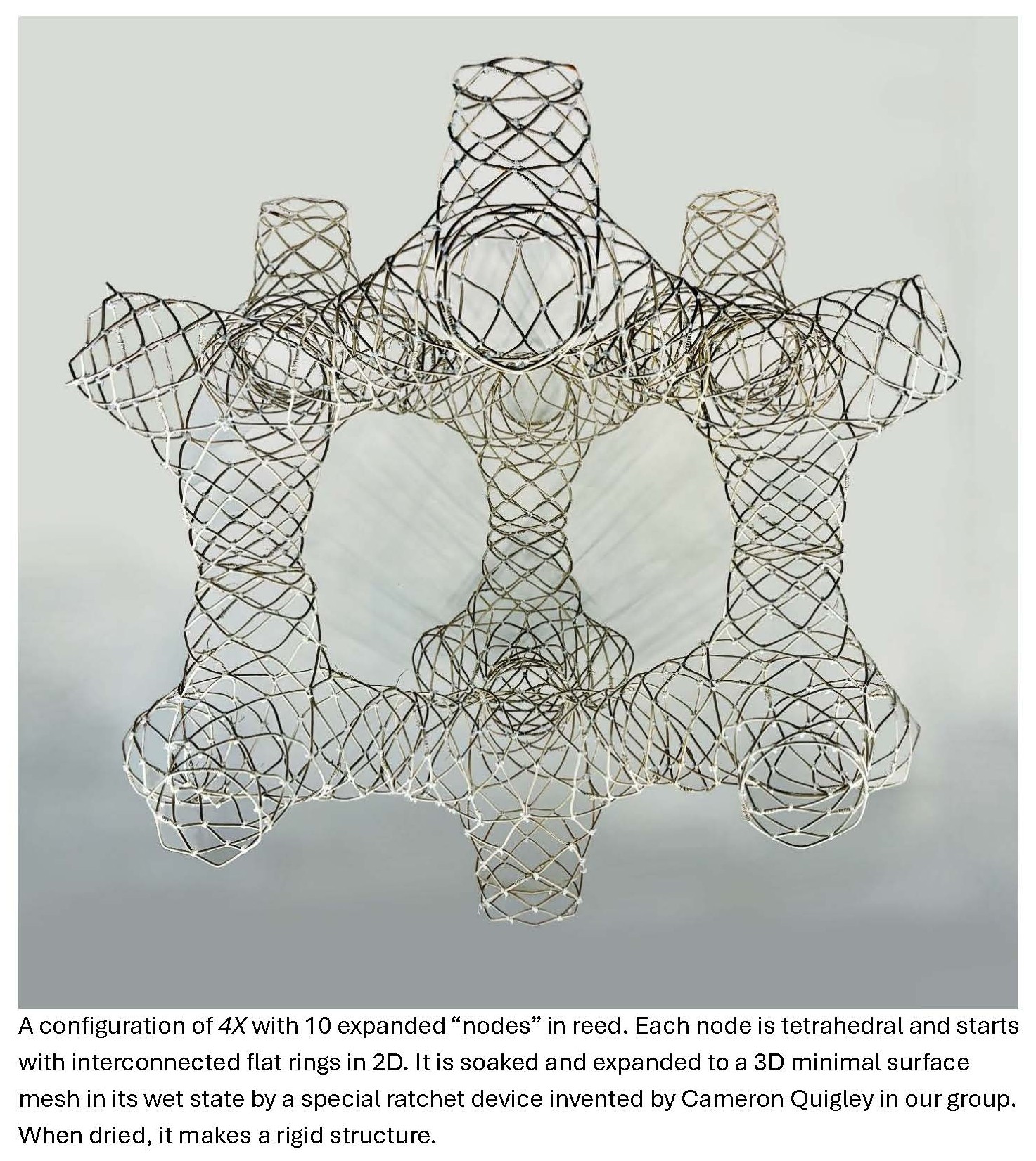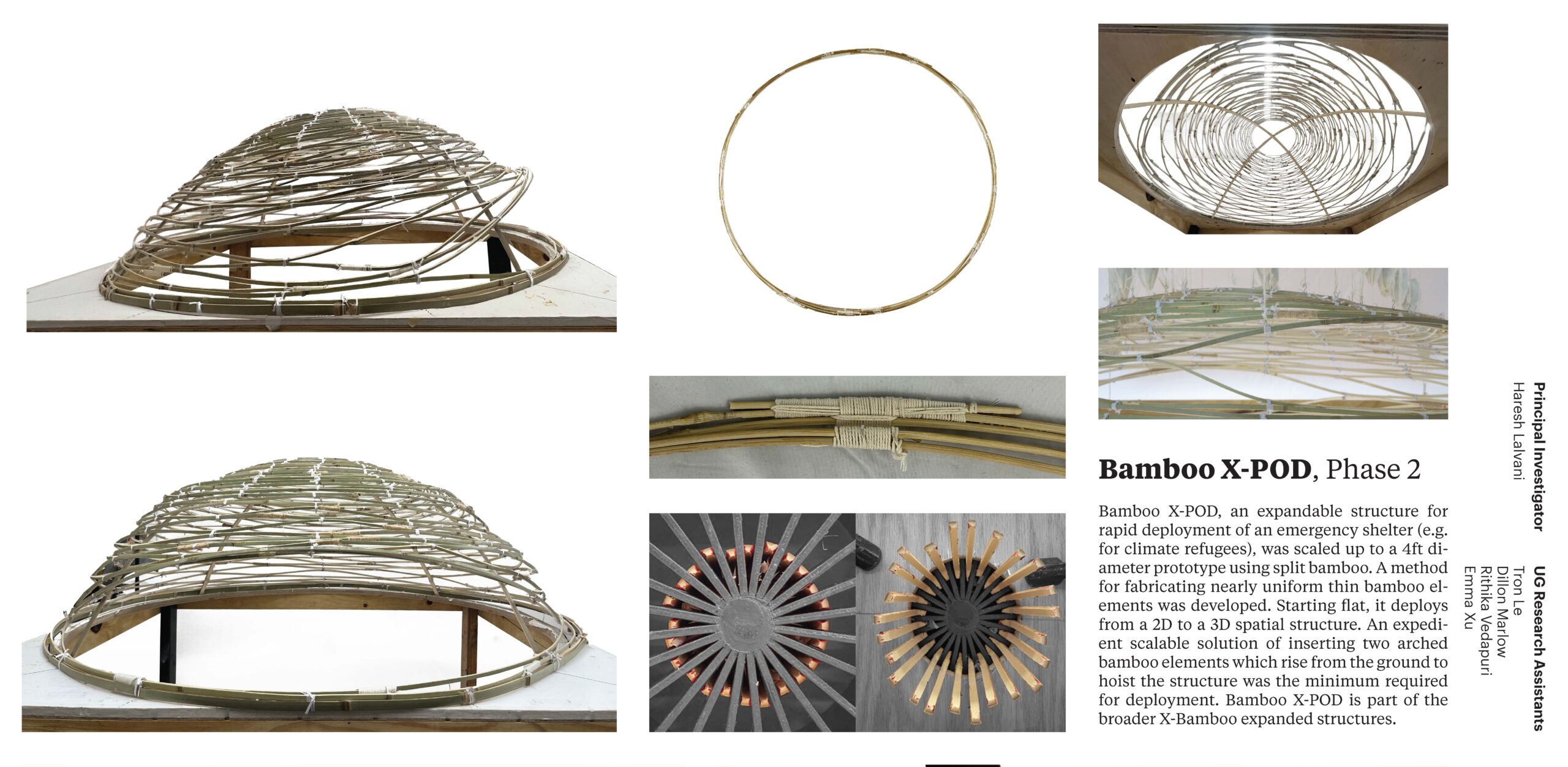X-REED HYGROSTRUCTURES: Introducing Triply Green Building Technology







"This project is a work-in-progress on HygroStructures (‘hygro’ from the root Greek word ‘hugros’, meaning ‘wet’), a new class of physical structures that conserve form, material and process. HygroStructures are formed by water and air acting on absorbent material by wetting and drying to make rigid structures. A green process.
Within HygroStructures, we show one application to X-Reed, eXpanded structures made in reed, a green material. X-Structures start from 2D and expand into 3D forms by applying force, another green process. Expanded structures build on X-Structures in metal by the principal investigator with the metal fabrication company Milgo-Bufkin as one of Milgo Experiments (1997-2014).
X-Reeds are formed by force, air and water. We present one example – 4-Way X-Reed, or 4X - as proof-of-concept of a new building technology. 4X (Plates 1-3) is a minimal structure in two ways. It has a minimal surface for the volume covered and is based on the diamond lattice, a minimal 3D lattice. Its form is minimal, a green form.
4X has a green form made from a green material using a green process, an introduces a triply green building technology. In future, we expect to apply this technology to a small experimental pavilion.
Plates 4-6 show earlier stages of development of 4X.
Since reed is limited due to available sizes and strength, our hope is to adapt expanded structures to X-Bamboo to enable larger structures in bamboo, a more resilient material with a negative carbon footprint. "